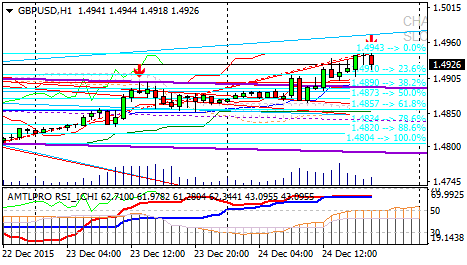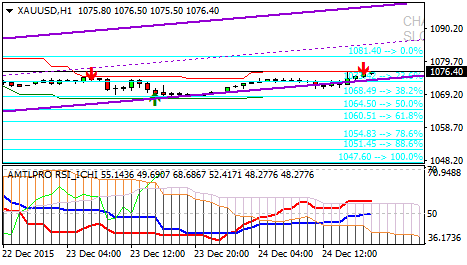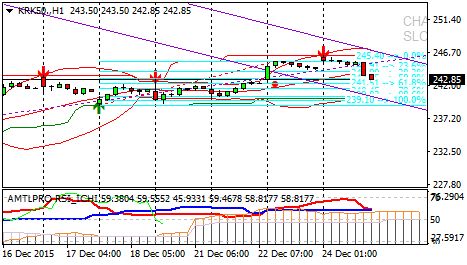Kospi Pressure Impact Sentiment Improved Debt Korea
Kospi ended up depressed and weakened, the Kospi retreat of positive results during the opening last Thursday morning. The index closed down -8.57 points, or -0.43 percent, 1990.65. Weakening the Kospi depressed negative sentiment rising public debt of South Korea.
South Korea’s public sector debt has approached nearly 65 percent of gross domestic product (GDP). The Ministry of Strategy and Finance South Korea on Thursday said that the debt owed by government and non-financial state-owned enterprises at the end of last year amounted to 957.3 billion won, or about 816 billion US dollars. Of debt of 64.5% of the national GDP, government debt 620.6 trillion won. In terms of numbers, the public debt rose 58.6 trillion won from 2013.
At the close of trading on the stock exchange last Thursday South Korea, Hyundai Motor shares ended flat after finally reached an agreement with unions that were able to avoid major production losses in the largest base of manufacturing. This agreement is subject to a vote by union members on Monday.
Shares of retail companies were mixed after data showed consumer sentiment fell to a three-month low in December. Lotte Shopping shares rose 0.4 percent while Shinsegae and Samsung C & T shares fell 1 percent respectively.
As for the Kospi index futures tracked down -2.35 points, or -0.96% to 242.40 positions, down from its previous close at 244.75.
Technically, the index on the trading session today, Monday (27/12) likely to weaken, test negative trends, the impact of Wall Street. At the M15 chart bearish engulfing formation provides opportunities for the index to move downside. However, the volume tends to increase, an early indication of bullish index. In addition, RSI, the M15 chart, was oversold, signaling upside.
It is estimated, the index test the first support level 242.10 and 241.25. If it fails at 243.10, then the next index is expected to tend to retest the 243.80 resistance level and continued up to the possibility of being in the 244.50 area.
Sterling Rebound
Sterling posted a weekly gain and the lowest level in eight months away. The sterling rebound continues on Monday after the dollar weakening even though the data showed US weekly jobless benefit claims better than expected on Thursday.
Sterling earlier tumbling to touch the eight-month low after the Bank of England economists say the fastest will raise interest rates in May next year. Financial markets are even more pessimistic with estimates increase of interest rates in the UK will take place in late 2016 or early 2017. On the other hand, the Federal Reserve is expected to raise interest rates again in March 2016.
England also face the risk of “Brexit” where the results of the poll showed the number of people who want Britain out of the European Union began balanced with the wish to survive. Two weeks ago the volatility of sterling rose to its highest level since May after Prime Minister David Cameron said there was “momentum” to reach an agreement on Britain’s membership in the European Union leaders at a meeting February 18 to 19 next.
Technically, the trading session today, Monday (27/12), pound sterling-dollar pair has an opportunity to move in a negative trend.
The weakening of the pound sterling mainly expected soon reexamine the minimum support at 1.4850 and maximum 1.4800. Meanwhile, if the pound sterling was able to break and hold above 1.4935, then the other alternative scenario that is Pound chance to test resistance in 1.4980 and 1.5030 area.

Gold Price Print Strengthening In First Week In 2 Weeks
Gold prices rose on Thursday, stop losses over the past two days, as the dollar weakened ahead of the Christmas holidays, and also because of the recovery in oil prices gave a positive sentiment for gold.
Spot gold prices rose 0.69% to $ 1,075.80 / onz, after falling 0.7% in the past two sessions. US Gold prices for February delivery settled up $ 7.60 at $ 1,075.90.
The price of gold has fallen about 9% this year, which would be a decline for the third consecutive year, largely due to expectations the Federal Reserve will Raise interest rates, which has been lifted this month.
Julius Baer, an analyst at the Warren Kreyzig said that rising US interest rates, has been given a lot of negative sentiment towards gold but now seems to have started a balanced back, which has given support to the gold price in the short term.
He also added that when people begin to focus on the fundamentals yag inflation is low, and the growth of the US economy, gold will be bearish impact on the return.
Analysts said that with the rise in US interest rates for the first time in nearly a decade that has happened, the focus today is the pace of further interest rate hikes.
Higher interest rates will hurt the gold is a non-yielding asset, which outlooknya currently still largely bearish, with many predictions will drop to below $ 1,000 per barrel by the end of next year.
Technically, gold on the trading session today, Monday (27/12) the potential reversal, testing positive trend, but prone to profit taking. RSI indicator tends to re-test resistance and aiming the bullish channel, but Bollinger Band begins to shrink, thereby giving impetus for gold to the downside.
It is estimated that the gold price immediately prior to test resistance in the area of at least 1071.10 and re-test the maximum level of 1076.87. But if the gold price could not break and stays below 1076.00 then predicted gold prices could potentially test the Support 1072.78 and 1067.40.








